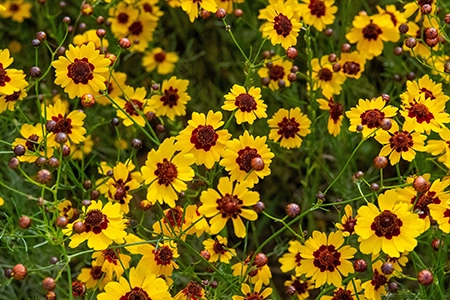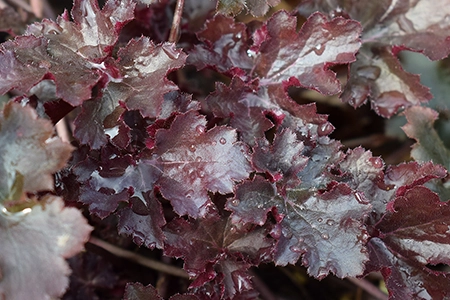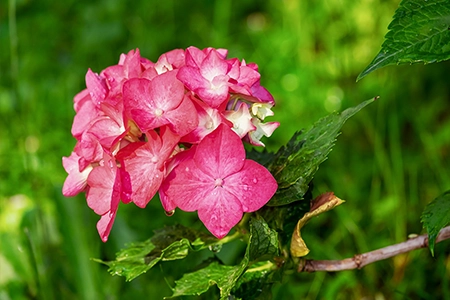Introduction
Gardening enthusiasts know that timing is crucial when it comes to planting. The garden is in full swing as August arrives, but it’s also an excellent time to think about what to plant next. Knowing what to plant in August can set your garden up for success, ensuring a continuous and thriving display of blooms and a bountiful harvest of vegetables. This article will guide you through the best perennials and vegetables to plant in August and provide tips on maintaining your garden.
Planting Perennials at the Right Time
Planting perennials at the correct time of year is essential for their successful establishment and growth. Perennials need to be planted when the soil is still warm, but the air temperatures are starting to cool down. This allows the roots to grow and establish before winter sets in. Planting at the wrong time can lead to poor root development, making plants more susceptible to diseases and winter damage. Knowing what to plant in August ensures your perennials get off to the best possible start. You must plan for and plant perennials at the right time and not just in August! With Autumn approaching it is important that you get ahead of the game. Read our blog and learn what you should be stocking up on before October presents itself.
Best Perennials to Plant in August
Here are five perennials that thrive when planted in August:
- Aster
- Sedum (Stonecrop)
- Heuchera (Coral Bells)
- Salvia
- Coreopsis
Aster
Asters are known for their daisy-like flowers, which come in shades of blue, purple, pink, and white. These charming perennials typically grow to a height of 2-4 feet and have a subtle, sweet fragrance. Asters are butterfly magnets, attracting a variety of pollinators to your garden, adding both beauty and ecological value. Their vibrant colours and appealing scent make them a delightful addition to any garden space.
Native to North America, asters were brought to the UK for their ornamental value and have since become a garden staple. Their ability to thrive in a variety of conditions and their long-lasting blooms make them a favourite among gardeners. Planting asters in August ensures that they have time to establish before the winter, providing a reliable and attractive display year after year.
Sedum (Stonecrop)
Sedums, also known as Stonecrop, are characterised by their fleshy, succulent leaves and clusters of star-shaped flowers that can be pink, red, yellow, or white. Most Sedums have a faint, sweet fragrance that adds a subtle charm to the garden. These perennials are not only visually appealing but also practical, as they are extremely drought-tolerant and require minimal maintenance.
Native to the Northern Hemisphere, Sedums were introduced to the UK for their hardiness and ease of care. Their resilience and ability to attract bees and butterflies make them a valuable addition to any garden. Planting Sedums in August allows them to establish strong roots before winter, ensuring they will thrive and contribute to a vibrant and sustainable garden environment.
Heuchera (Coral Bells)
Heucheras, commonly known as Coral Bells, boast striking foliage in shades of green, purple, and silver. Their delicate, bell-shaped flowers bloom on tall stems, adding elegance to any garden. The flowers have a light, sweet scent that subtly enhances the garden’s overall fragrance. Heucheras are particularly valued for their ability to add year-round interest with their vibrant and colourful leaves.
Native to North America, Heucheras were introduced to the UK for their ornamental foliage and versatility in garden design. They are especially well-suited for shade gardens, where their unique leaf colours and patterns can brighten up darker areas. Planting Heucheras in August ensures they have time to establish before winter, making them a reliable and attractive addition to any garden landscape.
Salvia
Salvias, also known as sages, are distinguished by their spiky flower stalks with blooms in shades of blue, purple, red, and white. Depending on the variety, they can grow between 1 to 4 feet tall. Their aromatic foliage has a fresh, herbal scent that adds a pleasant fragrance to the garden. Salvias are particularly cherished for their long blooming period, providing continuous colour and interest throughout the growing season.
Native to various regions, including the Mediterranean, Central, and South America, Salvias were introduced to the UK for their ornamental and culinary uses. They are known to attract hummingbirds and butterflies, enhancing the biodiversity of any garden. Planting Salvias in August allows them to establish well before winter, ensuring they will thrive and contribute vibrant colours and wildlife interest to your garden.
Coreopsis
Coreopsis, also known as tickseed, produces bright, daisy-like flowers in vibrant shades of yellow, gold, pink, or red. Typically growing up to 2 feet tall, these cheerful flowers have a light, pleasant scent that adds a subtle fragrance to the garden. Coreopsis is particularly valued for its long blooming period, offering continuous colour and interest throughout the growing season.
Native to North and South America, Coreopsis was introduced to the UK for its vibrant flowers and ease of care. It thrives in poor soil conditions and is drought-tolerant, making it an excellent choice for low-maintenance gardens. Planting Coreopsis in August ensures they establish well before winter, providing a reliable and attractive display in your garden year after year.
Best Vegetables to Plant in August
Here are five vegetables that will thrive when planted in August:
- Spinach
- Radishes
- Kale
- Beets
- Turnips
Spinach
Spinach is characterised by its dark green, tender leaves that grow in a rosette formation. The leaves have a slightly bitter, earthy taste that becomes sweeter when cooked, making them versatile for various culinary uses. Spinach is packed with essential nutrients, including iron, vitamins A and C, and folic acid, making it a highly nutritious addition to any diet.
Originating in Persia, spinach was introduced to the UK in the 14th century. Since then, it has become a staple in British gardens and kitchens. Its nutritional benefits and adaptability to different dishes have made spinach a popular choice among gardeners and cooks alike. Planting spinach in August ensures a fresh, healthy crop that can be enjoyed well into the cooler months.
Radishes
Radishes are known for their round or elongated roots, which come in a variety of colours, including red, pink, white, and purple. Inside, they have crisp white flesh that provides a satisfying crunch. Radishes have a distinctive peppery flavour, adding a zesty bite to salads and other dishes.
Believed to have originated in Southeast Asia, radishes were brought to the UK by the Romans. One of their standout features is their rapid growth cycle; they are quick to mature and can often be ready for harvest in just four weeks. This makes radishes an excellent choice for gardeners looking for a fast and rewarding crop to plant in August.
Kale
Kale features curly or flat leaves that come in shades of green or purple, growing on tall stalks. This leafy green has a robust, slightly bitter flavour that becomes sweeter after a frost, making it a versatile addition to a variety of dishes. Kale is highly nutritious, packed with vitamins K, A, and C, offering significant health benefits.
Originating in the eastern Mediterranean and Asia Minor, kale was introduced to the UK by European settlers. Its exceptional cold-hardiness allows it to thrive even in harsh winter conditions, making it a reliable crop for year-round gardening. Planting kale in August ensures a continuous supply of fresh, nutritious greens as the temperatures drop.
Beets
Beets are distinguished by their round or cylindrical roots, which can be red, yellow, or white, and are topped with leafy green stems. They offer a sweet, earthy flavour, and their greens are also edible, providing an additional layer of versatility to this vegetable. Beets are valued for being dual-purpose, as both the roots and greens are nutritious and can be used in a variety of dishes.
Originating from the Mediterranean region, beets were cultivated in the UK as early as the Roman period. Their long history and adaptability make them a staple in gardens and kitchens. Planting beets in August ensures a bountiful harvest that can be enjoyed well into the colder months, with both the roots and leaves contributing to a healthy, flavourful diet.
Turnips
Turnips can be identified by their round roots, which come with white or purple skins and are topped with leafy green stems. The roots offer a mildly sweet, slightly spicy flavour, while their greens are also edible and highly nutritious. This dual-purpose vegetable provides both flavourful roots and nutrient-rich leaves, making it a versatile addition to your garden.
Native to Europe and Asia, turnips have been cultivated in the UK since ancient times. Their long history and adaptability to different growing conditions make them a reliable choice for gardeners. Planting turnips in August ensures that both the roots and greens will mature well before the colder weather arrives, allowing you to enjoy this nutritious vegetable throughout the year.
Maintaining Your Garden in August
While planting new perennials and vegetables is important, maintaining your current garden is equally crucial. Here are three plants that may need attention in August:
- Roses
- Lavender
- Hydrangeas
Roses
To maintain healthy roses, regularly deadhead spent blooms to encourage more flowers and promptly cut back any dead or diseased stems. Ensure the plants receive adequate water and apply a balanced fertiliser to support continued growth and blooming. These practices help keep roses vibrant and flourishing throughout the season.
Lavender
To care for lavender, trim back the plant after flowering to maintain its shape and promote bushy growth, but be careful not to cut into old wood. Lavender thrives in well-drained soil and prefers dry conditions, so ensure proper drainage and avoid overwatering. These practices will help keep your lavender healthy and encourage its signature aromatic blooms.
Hydrangeas
To care for hydrangeas, remove spent flowers and cut back to a pair of healthy buds to shape the plant and encourage robust growth. During dry spells, water the hydrangeas deeply to ensure they receive adequate moisture, and apply mulch around the base to help retain soil moisture and regulate temperature. These practices will support the overall health and vitality of your hydrangeas.
How Norfolk Garden Services Can Help
At Norfolk Garden Services, we understand the importance of planting at the right time and maintaining your garden throughout the year. Our expert team can provide personalised advice on what to plant in August and offer comprehensive maintenance services to keep your garden looking its best. Whether you need help with pruning, planting, or designing a low-maintenance garden, we’re here to assist. Let us help you create and maintain a healthy, beautiful garden that you can enjoy without the hassle.
By knowing what to plant in August and how to care for your existing plants, you can ensure a garden that flourishes well into the cooler months. Trust Norfolk Garden Services to support you in achieving a garden that’s not only beautiful but also thriving and resilient.
To find out more about how we can help you with your planting schemes, visit our Contact Us page!
Further Reading
Want to be better prepared for the other 11 months of the year? Here are some more articles that will help guide your planting schemes throughout the different seasons:
What to Plant in October – Brilliance of Bare-Root Fruit Trees
What to Plant in January: Unlock your Garden’s Potential
What to Plant in February for a Flourishing Garden
How to Prune Roses in February for a Blooming Spring
Winter Perennial Protection: Shielding your Garden from the Cold






















